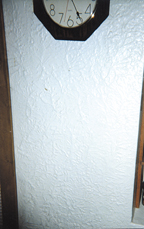
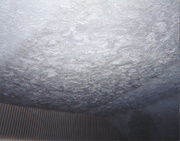

Back in the old days
Photo #1is from a home built around 1940. The homeowner was there when the last plasterer did the texturing. This wall is made up of wood lath and three-coat plaster. She told me that the plasterer worked off of planks and used a large natural sponge that was shaped like a horseshoe. As the plaster set, he went back over the surface with a trowel and knocked down the surface flat. It seems that there are a lot of people who take great pride in their plastered walls, while some can't wait to have them resurfaced to a smooth finish. It seems as much a matter of personal taste as when picking out which color the room is going to be.
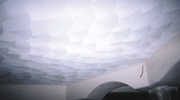
Further touch ups to the surface can be done with the use of a small trim brush or one similar to those used for water troweling smooth coat plaster. The main thing to keep in mind with many textures is that the effect you are trying to create and imitate does not necessarily have to be done in one step. Look at the surface and study the different layers that are there. Then try to simulate each layer a step at a time. This can help you match the toughest of textures.
A simple plan
Photo #3shows a simple way to decorate a surface using a round texture style. This is often done with joint compound and I've seen a lot of it used with plaster as well. I've used two methods myself in matching repairs to such a ceiling and also in creating new ceilings where people have wanted this texture. The first method is using a sponge. If it's a rectangle-shaped sponge, use the short end and use a twisting motion to create the circles. The second way is to use a brush similar to those used by wallpaper hangers to smooth down paper. A stiff-bristled brush is what you want, fairly even across. This works well where you have to do a large area. Believe me when I say you will feel this in your neck and shoulders very quickly!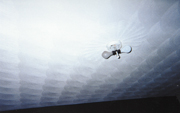
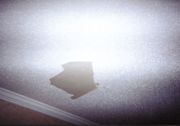
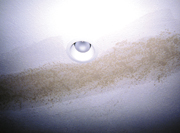

Holding the sponge firmly in place to create a starting edge, and with the base of the sponge against the fixture, a short, quick stroke to the left releases the finish which creates a petal, smaller next to the light fixture, wider at the top of the petal. This is repeated around the entire light fixture until a complete flower is made. This is best experimented with on a sample board until you get the hang of it. (Don't feel badly if it doesn't come easy. I know many people who never have gotten the hang of doing this. And then there's some who never want to.)
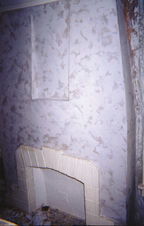
Photo #9is an example of how brick can be simulated using plaster. In some bathrooms of older homes plaster was scored with lines to make it look like small tile. This "brick" wall pictured was done using a veneer-coat plaster system. First, a basecoat was applied to the wall. Over this the joint color was applied, a charcoal gray. Over this a heavier sand finish was applied and then textured. Using a straight edge, lines were cut through the top textured coat down to the joint color, making the brick effect. Not the most popular style around, but used in a creative way, this can render some neat designs and textured looks.
Photo #10 is an example of waterfall texture. It is a bumpy type of texture that is applied in islands of finish coat and then knocked down. The final technique is to rub down the edges so that a weathered, aged look is obtained. This can be heavy, or can be done as one homeowner put it, "I want it to look like a bad smooth coat job!" To each his own!
On another note, I had a great visit to Boston in March. I have started to use an overhead for my presentations, using a string of case studies to explain plaster to the historical and preservation groups. The sequence pictures really bring the topic of plaster to life. Plans are underway to head West in August to work with some home associations and hopefully with some contractors in that area as well, right around Pasadena, Calif. If you're interested in attending a workshop out there, just drop me a line. It looks like the next Restoration and Renovation show is going to be Cleveland in October if things go as planned.
I've had a huge amount of letters and questions that I've answered and replied to, but I feel it's time to share some of them through this column. So that's what the next column or two will be devoted to your questions and letters. Keep them coming and stay in touch. Your thoughts are always appreciated and it's nice to know that there is a strong group of you out there who are just as impressed and interested in plaster as I am.

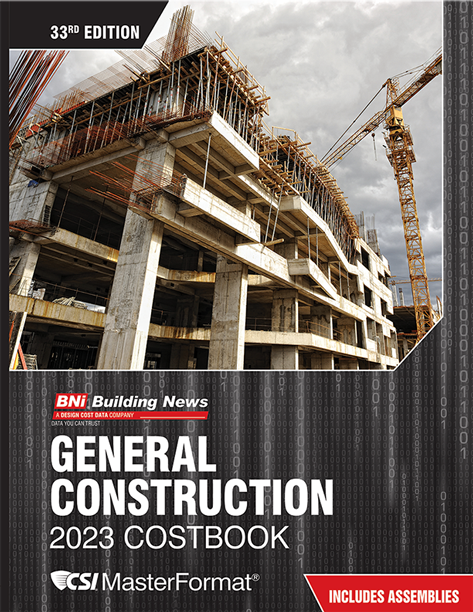
Report Abusive Comment